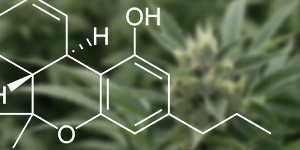By Tanja Bagar

Dr. Tanja Bagar is a microbiologist with a PhD in Biomedicine. She has gained extensive research experience in biotechnology, molecular biology and cell signaling in laboratories in Slovenia, Germany and the UK. Her focus has mainly been on the endocannabinoid system and active substances from cannabis/hemp. Her work led to the formation of the International Institute for Cannabinoids (ICANNA), where she is the CEO and chairman of the Expert Council. She is also the deputy director and head of R&D in an environmental company. She is active in the academic sphere as well. She lectures on microbiology and is the dean of the master’s program of Ecoremediations at the Faculty Alma Mater Europaea.
The endocannabinoid system (ECS)
The more the endocannabinoid system is studied to more we are fascinated with its vital function in health and disease. At the basis the endocannabinoid system is a signalling system, enabling the cells of our body to communicate. Communication between cells, tissues and systems is vital for all multicellular organisms and the more complex and evolved organisms are the higher is the importance of cellular communications. The basic setup needed for cellular communication or signalling is similar as in all communications. We need to know what message we want to send (a signalling molecule) and to who we want to send it to (who has the right receptors or antennas). Cells typically communicate using chemical signals. These are different types of molecules (cannabinoids are just one of many) produced by a sending cell and released into the extracellular space. There, they can float – like messages in a bottle – over to neighbouring cells or into circulation.

Figure 1: schematic representation of cell signalling (source: https://www.khanacademy.org)
Not all cells can "hear" a particular message. In order to detect a signal a cell must have the right receptor for that signal. When a signalling molecule binds to its receptor a shift takes place triggering a change inside of the cell. Signalling molecules are often called ligands, a general term for molecules that bind specifically to other molecules (such as receptors). A signalling molecule and receptor recognize each other based on a unique 3D molecular structure. In essence a receptor will bind a molecule if its structure fits the receptors binding site in a very similar way as a key fits a keyhole. If it's a match the doors will open and if not, nothing will happen. If a signalling molecule and a receptor are a match, a cascade of downstream reactions will take place, ultimately, leading to a change in the cell, such as alteration in the expression of a gene or even the induction of a new process, such as cell division, apoptosis... Such communication not only enables the cells to respond to changes in the extracellular environment, adapt to these changes and thrive but also exchange signals between cells, tissues, organs, and whole body. These basic principles of intracellular communication are important since they are also fundamental in understanding the endocannabinoid system.
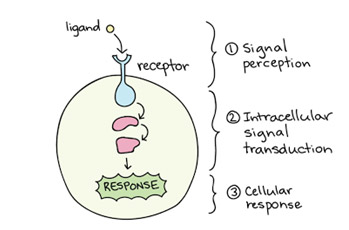
Figure 2: schematic representation of signal transduction (https://www.khanacademy.org)
The role of the endocannabinoid system is very complex. It affects the majority of the systems in our bodies and the cannabinoid receptors are expressed (in different density) on majority of cell types. So describing what exactly it does, is not an easy task, as it regulates the biochemistry of vast majority of estimated 37 trillion cells in our body. Research has shown that the endocannabinoid system functions as an SOS mechanism that is activated whenever our bodies are out of balance for whatever reason. So for example it is activated when we suffer from a physical injury, when we encounter pathologic microbes and also when we feel emotional pain or are under stress.
We now understand the ECS to serves as a general protective mechanism, starting at the cellular level, proceeding to the tissues, organs, body and our general well-being. The ECS is turned on, when the cellular homeostasis is out of balance. It is like the first line of defence to go off, activating all other mechanisms needed to return to homeostasis as soon as possible.
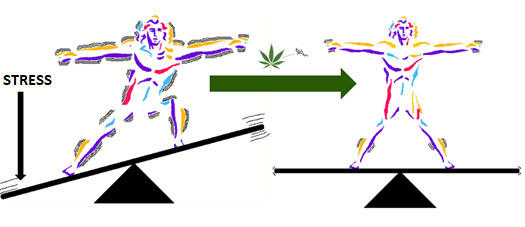
Figure 3: Representation of homeostatic mechanism and the role of cannabinoids (source: Institute ICANNA)
What is stress and how much is too much?
Life in today's modern society is giving many challenges to our endocannabinoid system and this can lead to exhaustion of the supply of endocannabinoids and other systems. If we take a look at one ordinary day, getting up, getting ourselves and kids ready for work and school, all in a hurry, being in traffic, responsible and stressful jobs, challenging relationships, toxic environment, contaminated food, water and air...it is obvious that in one ordinary day our ECS is facing more challenges than it would in a month or longer some 100 years ago. If our endocannabinoid system is constantly challenged over a longer period of time, this vital SOS mechanism can start to dysfunction. It can dysfunction either by not producing endocannabinoids when we need then, or producing endocannabinoids when we do not need them. This is usually one of the first steps in the development of chronic disease, the first domino to fall in a complex falling domino chain, leading to symptoms and disease. The majority of experts agree that many if not all chronic medical conditions carry an element of stress in their development, and stress is actually considered to be the epidemic of the 21st century.
The fight/flight response has always been a part of our physiology and has served human kind very well most of the time. in keeping us safe and enabling us to access energy when we needed to fight or escape a dangerous situation. It also serves as a protective SOS mechanism in many aspects similar to the ECS.
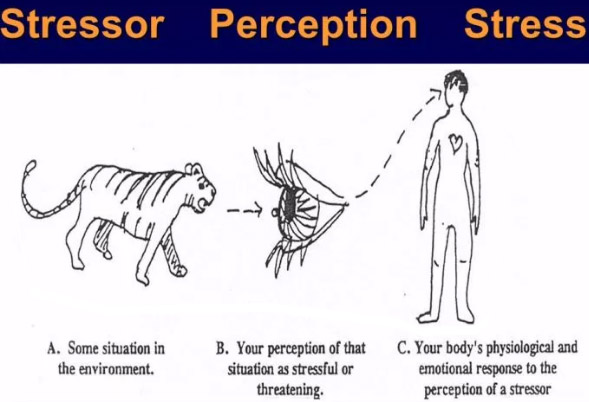
Figure 4: The basic stress perception (source: http://strongbyscience.net/2017/09/28/physical-physiological-stressors-autonomic-nervous-system/)
When our mind perceives a situation as stressful it communicates this stress to our pituitary gland, which then releases hormones to the adrenal glands, which in turn releases more hormones to communicate with other cells and organs within the body. This fight or flight response activates the sympathetic nervous system, inhibits the parasympathetic nervous system, and mobilizes the necessary energies to overcome these stressors. This is known as the HPA (hypothalamus, pituitary, adrenal) axis. In case of perceived stress, the adrenal gland will produce cortisol (among other things), known as the stress hormone. Increased production of cortisol results in the increased availability of glucose, as it is an energy mobilization hormone, in order to facilitate fighting or fleeing, but cortisol also suppresses the highly demanding metabolic processes of the immune system, resulting in further availability of glucose.
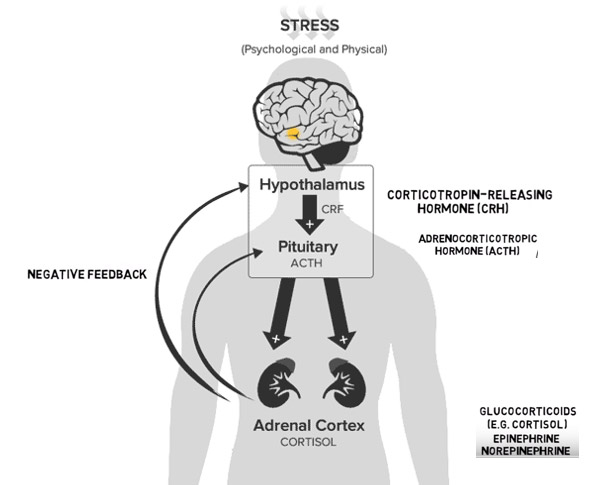
Figure 5: The HPA axis (source: Institute Icanna)
Our body also reacts with a flight/fight response to everyday situation and this continuous or repetitive exposure to stress is not something our bodies cope well with. We see a staggering increase in chronic fatigue syndrome, insomnia and burnout, to name only a few that have been connected with prolonged exposure to unresolved stress.
Are we coping?
In a healthy body the stress-response system is self-limiting but often we do not notice the warning signals that we are under chronic stress. The signs may range from the tiredness you feel for a few days after recovering from an illness to debilitating fatigue that interferes with life and doesn't go away with rest, to recurring infections, to headaches and digestion issues.
What does the ECS have to do with it (HPA – ECS crosstalk)?
The hypothalamic–pituitary–adrenal axis (HPA axis or HTPA axis) is in fact a very complex set of direct influences and feedback interactions among the three components: the hypothalamus, the pituitary and the adrenal glands. Even the adrenal gland themselves are more then just cortisol producers: they produce over 50 hormones (adrenaline, aldosterone, DHEA, testosterone, progesterone and other). The ECS is very closely involved with our stress responses in many aspects, from the perception of a situation, to biochemical reactions and all the way to regulation of our responses and behaviours in stressful situations. The ECS is in fact involved in the perception of stress, the production of neurotransmitters, the production of hormones of the HPA axis and production of cortisol, the functions of the feedback loops, in practically all aspects of stress responses.
From what we understand so far, the ECS is a vital and integral part of perception of stress, in a sense an interface between stimulus input and responses at the synaptic and behavioural levels. The ECS helps us in defining the importance of the situation, determining how big of a treat it is and to tune the right behavioural responses, which are essential for the organism's long-term viability, homeostasis and stress resilience.
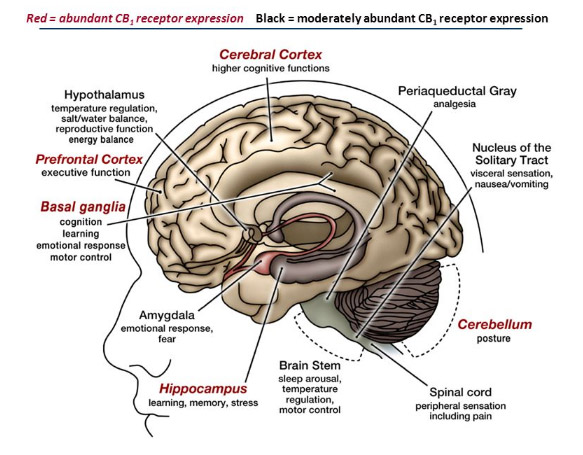
Figure 6: The brain regions with high cannabinoid receptor density (source: http://www.ipharmatrials.com/cannabidiol-menstrual-cycle/)
When we look at the brain regions involved in stress processing, we see that these regions also have a high density of cannabinoid receptors. We know that besides the hypothalamus and pituitary gland, also the amygdala, prefrontal cortex and hippocampus respond to stress and influence our reactions and behaviour during stress. All these regions also have high density of cannabinoid receptors. So already anatomically we see a good overlap of the two systems. Since the brain regions involved in stress processing are also well equipped with the machinery of the ECS, and we know that cannabinoids modulate synaptic transmission, it is evident that the neuronal reactions that follow exposure to stress can be modulated by adequate ECS reactions. At the neuronal synapses cannabinoids function as retrograde messengers, binding to presynaptic receptors which in turn mediate the suppression of neurotransmitter release, leading to either transient short-term or long-term reduction of synaptic transmission. In a way this means the cannabinoids turn down the volume of the noise in our brain (reduce the amount of messages that travel from one neuron to the other). We all know from our own experience that when we have too much stress factors during the day and we are not coping well, we have this feeling of noise in our brain that we often cannot turn down when its time to rest in the evening.
Many elements of the ECS are involved in stress responses, from the receptors, to endocannabinoids, to their precursors and involved enzymes. So we can look at the ECS as a modulator between the outside and inside world. It acts via many different mechanisms, resulting in either enhancement or suppression of the neurons in the brain regions involved in anxiety, fear and stress. Essentially ECS functions as a brake mechanism used to fine-our reactions. The ECS is mostly silent and turns on the brake when there is too much activity.
So how can this knowledge help us deal with stress?
When we notice that our body is not coping with the challenges its time for action.
Food
The first step is to feed the ECS and see if this will do the job. The foods we choose to eat, the supplements we take, and the variety of meals and drinks consumed over time have an effect on the level endocannabinoids and cannabinoid receptors that the human body can produce. The life style choices can care and feed the ECS or disrupt is. We know that omega 3 fatty acids are precursors for the production of endocannabinoids, so a steady supply of omega 3 is vital of a functioning ECS. When our bodies need to produce endocannabinoids and do not have the necessary building blocks, regardless of how many stimuli there are, our cells cannot produce endocannabinoids. So in essence, the SOS system is turned off.
As Aristotle said, health comes from the gut, and this is true also for the ECS. Our microbiome is in communication and interaction with the ECS and signalling is happening in both directions. A healthy microbiome is critical for a well-functioning ECS in many ways. One is that many of the endocananabinoids are in fact produced in the gut, the other is the brain-gut connection, where many of the neuronal activities are effected by messenger molecules sent by the beneficial or non-beneficial microbes in our gut.
So all in all, it is vital that we have a healthy, beneficial microbial population in our gut and elsewhere in our bodies, for our ECS to function properly. Some foods such as extra virgin olive oil contain phenolic compounds and other bioactive compounds which may encourage enhanced expression of cannabinoid receptors. So diverse plant based food is a good step in caring for the ECS.
Phytocannabinoids
If making changes in food choices and life style does not help adequately its time to consider supplementation with phytocannabinoids. Cannabidiol or CBD is the phytocannabinoid that has been best studied in stress prevention and management. Many research articles have studied the effect of CBD on anxiety, depression, stress and other mood disorders. The common denominator of the studies is that CBD offers relief from these symptoms, employing many different mechanisms. To underline the data from research labs, results from users of CBD worldwide is are showing very similar results.
CBD can be used as a preventive measure as it functions as a guardian molecule, it shields the cells from the effects of stress. It regulates and fine tunes the HPA axis, helping to maintain the proper functioning of our biochemistry even in persistent or unpredicted stress situations. It was shown that CBD offer protection to the adrenal glands, thyroid and the brain during periods of unpredicted stress, something we can all relate to.
On the other hand, if we are already suffering from a wide range of symptoms related to stress, like fatigue, sleep disorders, immune issues, digestion problems or other symptoms, CBD may also offer relief. CBD can, to some extent, do what our endocannabinoids should be doing. It regulates how much cortisol and neurotransmitters we produce and can give us the needed distance from stressful situation. Using CBD as a part of recovering strategy from burn out and fatigue has proven very successful. It helps with neurogenesis in brain regions damaged from prolonged/unpredicted stress, offers cardiovascular protection and modulation of the entire HPA axis. The body can regenerate, when we can turn down to volume of the surrounding world, rest, digest and restore balance. And cannabinoids can aid significantly in this pursuit.
Dr. Mecoulam's words: "the plant cannabinoids are a neglected pharmacological treasure trove" prove to be very adequate also when addressing stress, the epidemic of the 21st century.
